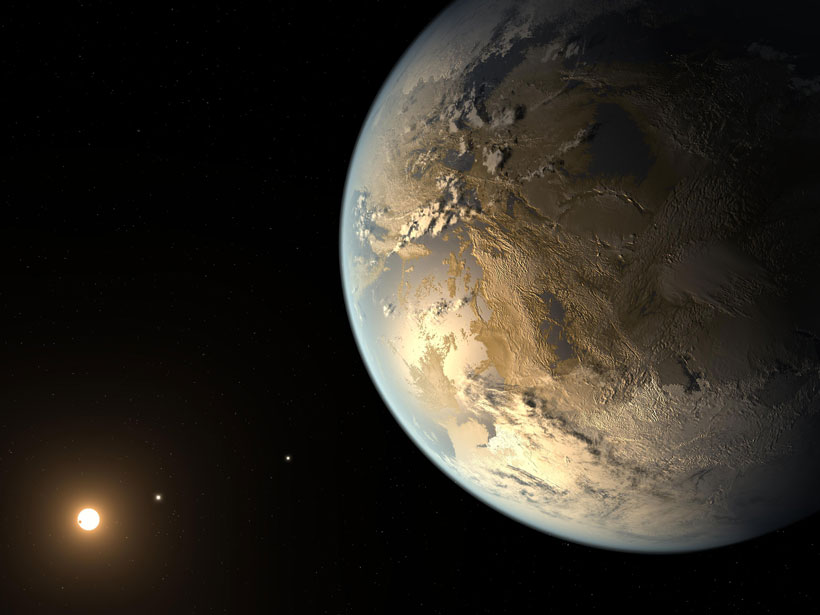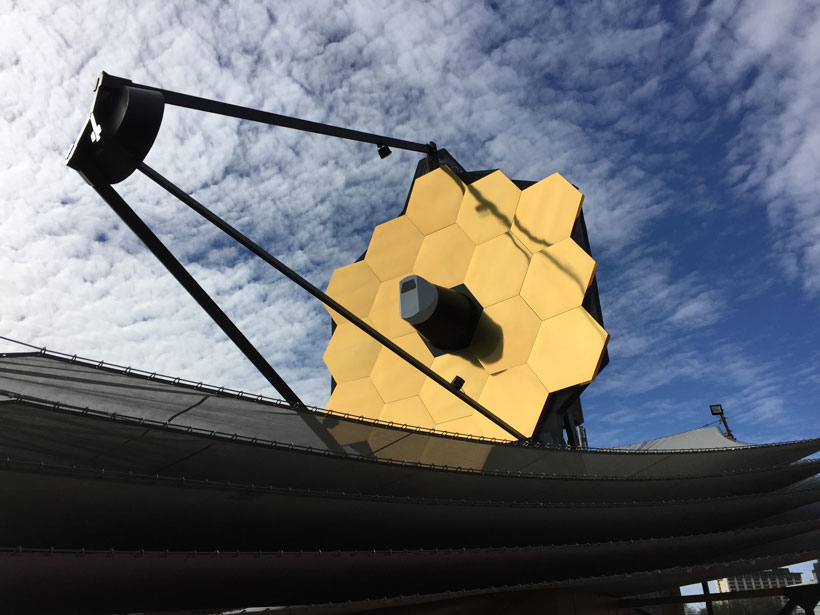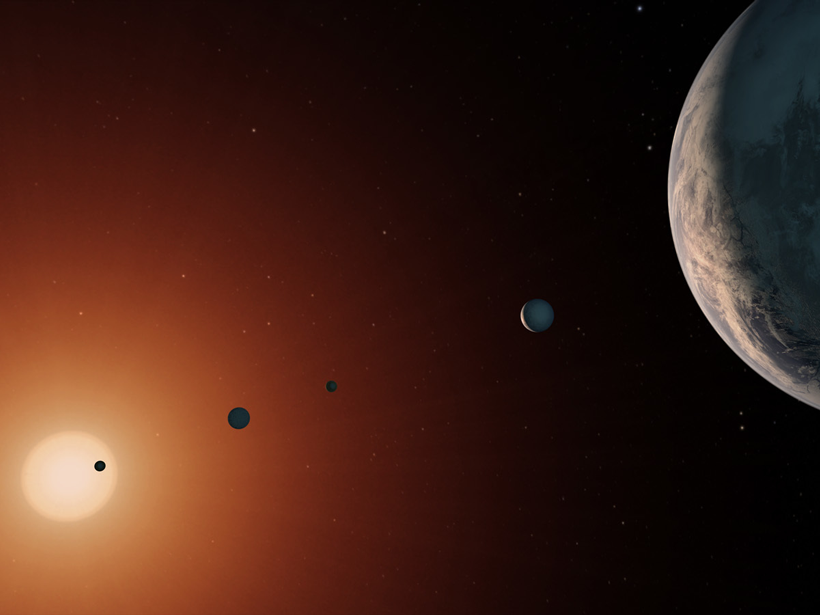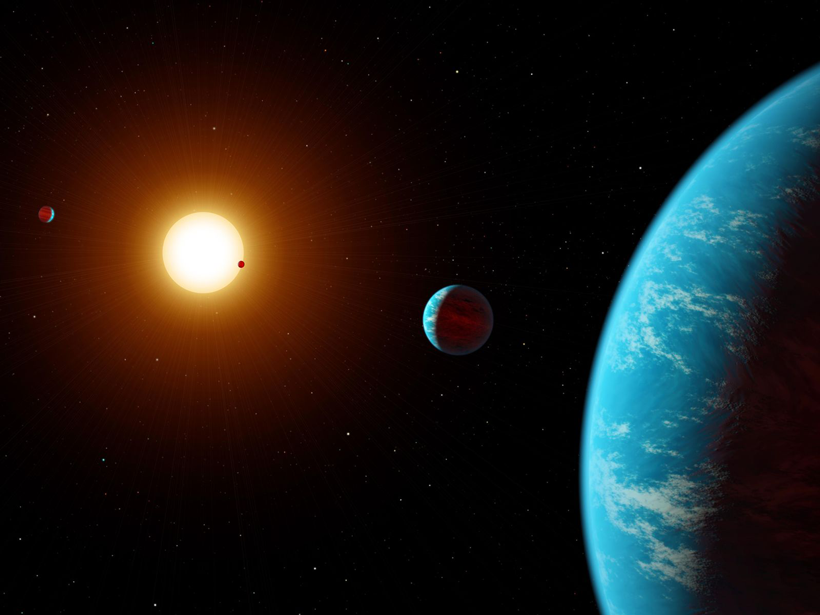Collaborative and interdisciplinary research will be key to realizing the missions’ full potential, according to the exoplanet strategy report.
exoplanets
Large Exomoon Likely Orbits a Faraway World
This Neptune-sized object would be the first moon discovered to orbit a planet outside the solar system, provided that additional observations continue to support the claim.
New Exoplanet Telescope Detects Its First Two Planets
The two possible planets, each larger than Earth and too hot to be habitable, are the first of hundreds of Earth-sized exoplanets expected to be discovered by a recently launched telescope.
How Well Can the Webb Telescope Detect Signs of Exoplanet Life?
Recent research suggests that NASA’s next-generation space telescope will be good—but not the best—at finding life-sustaining levels of oxygen in an exoplanet’s atmosphere.
Webb Telescope May Detect Minerals from Shredded Worlds
The upcoming James Webb Space Telescope should be able to measure the composition of vaporizing exoplanets, giving clues about the makeup of their cores, mantles, and crusts.
The Kepler Revolution
The Kepler Space Telescope will soon run out of fuel and end its mission. Here are nine fundamental discoveries about planets aided by Kepler in the 9 years since its launch.
AGU and AAS Join Forces to Foster Understanding of Exoplanets
Enhanced cooperation between organizations representing astronomers and Earth and space scientists will build upon interdisplinary work already bridging geophysics and astronomy.
Exoplanet-Hunting Telescope Launches
Scanning for traces of faraway worlds, TESS will make observations over an area hundreds of times larger than that observed by its predecessor, the Kepler Space Telescope.
Looking to the Future of Exoplanet Science
Upcoming missions seeking to unravel the secrets of exoplanets abound. An informal survey of astronomers revealed which of those projects they most eagerly await.
Ten Earth-Sized Planets Found by Exoplanet-Hunting Telescope
A new analysis of exoplanet candidates also reveals a previously unrecognized tendency for smaller exoplanets to grow into two distinct sizes.










